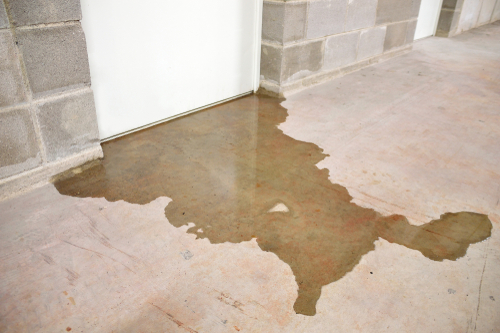In Carrico v. Stillwater Ins. Co., 23-CV-349-RAJ, 2024 WL 308106 (W.D. Wash. Jan. 26, 2024), the Western District of Washington considered competing motions for partial summary judgment in a property damage case involving a winter storm, where large amounts of rain and melted snow backed the drain up and the force of the water pushed through the exterior door causing damage to the entire basement level. At issue in the case was the application of the policy’s wear and tear exclusion and its exceptions.
The insurance policy covered direct physical loss but contained an exclusion for physical damage caused by wear and tear, marring or deterioration. The wear and tear exclusion included certain exceptions, which, if applicable, would reinstate coverage. Specifically, the exclusion contained exceptions for: (1) discharge or overflow from storm drains, water, steam, or sewer pipes that are off of the residence premises; and (2) discharge or overflow from plumbing, heating, air conditioning, or other similar systems on the residence premises. The policy expressly excluded water damage caused by “surface water … all whether or not driven by wind, including storm surge” and water which “[b]acks up through sewers or drains.” The Limited Water Back-up and Sump Discharge Or Overflow Coverage endorsement added back limited coverage for water which “[b]acks up through sewers or drains” up to a $5,000 sublimit.
The defendant, Stillwater Insurance Company (“Stillwater”) determined there was coverage under the Limited Water Back Up and Sump Discharge or Overflow Coverage endorsement and issued payment of the full $5,000 sublimit of that endorsement, together with a letter to the insureds explaining its coverage analysis. The insureds hired a plumber who determined that wear and tear to a drain trap near their basement door caused the drain to become inoperable and demanded the full policy limits, ultimately filing suit against Stillwater for Breach of Contract, Insurance Bad Faith, Violation of the Consumer Protection Act (“CPA”), and Violation of the Insurance Fair Conduct Act (“IFCA”).
The Court was tasked with adjudicating competing motions for partial summary judgment. The insureds filed a Motion for Partial Summary Judgment on their declaratory judgment, breach of contract, and CPA claims and Stillwater filed a Motion for Partial Summary Judgment as to breach of contract claim.
The insureds contended that the loss resulted from wear and tear to a plumbing system, falling under the exception to the wear and tear exclusion in the policy. The insureds attempted to define “plumbing system” broadly to include the drain trap, using the Uniform Plumbing Code and the deposition testimony of Stillwater’s adjuster. The insureds also sought partial summary judgment on their CPA claims, alleging violations of regulations such as failure to pay claims without reasonable investigation, failure to disclose policy benefits coverages and policy provisions, failure to provide a reasonable explanation for denial, and improper denial of claims under specific policy provisions or exclusions.
Stillwater maintained that the exception to the wear and tear exclusion did not apply in this case. Relying on the ordinary, dictionary meaning of “plumbing system” drain, Stillwater argued that the drain was designed to keep rainwater outside the house and did not concern the distribution or use of water within the insureds’ residence.
In considering the respective motions for partial summary judgment, the Court found that there was no coverage under the exceptions to the wear and tear exclusion. The first exception to the wear and tear exclusion would not apply because the loss occurred on the residence premises. There was also no basis for concluding that the water damage resulted from an overflow from a “plumbing system,” under the second exception. The Court emphasized that undefined terms in insurance policies are interpreted based on their ordinary meaning or common law definitions. Consequently, the pipe was found not to be a part of the house’s “plumbing system” and partial summary judgment was entered in favor of Stillwater on the insureds’ breach of contract claim.
Regarding the insureds’ CPA claims, given the evidence presented, the Court determined that Stillwater’s actions did not violate relevant regulations. Stillwater provided the insureds with a summary of the coverages available in the policy and explained that coverage was being extended under the policy’s endorsement up to the available sublimit. Therefore, the Court denied the insureds’ motion for partial summary judgment on the CPA claims.
Conclusion
This decision underscores the importance of clear policy language. Though the result was favorable to the insurer, the case nonetheless makes clear that insurers should attempt to define policy terms, where practicable. For example, the inclusion of the definition of the term “plumbing system,” could have avoided conflicting policy interpretations. Additionally, the case is a good example of the importance of clear communication and transparency with policyholders regarding coverage interpretations to mitigate potential disputes and ensure compliance with regulatory standards.


